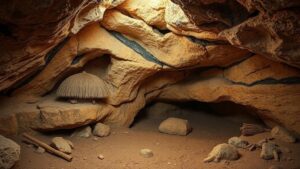Tools for Detecting Gold Nuggets in Dry Creek Beds and Arroyos
Tools for Detecting Gold Nuggets in Dry Creek Beds and Arroyos
The pursuit of gold has fascinated individuals for centuries, with the allure of finding a shiny nugget often sparking exciting adventures. While modern technology plays a significant role in this endeavor, understanding the various tools available for detecting gold nuggets in dry creek beds and arroyos is crucial for both amateur gold seekers and seasoned prospectors. This article will explore the different tools and techniques used, supported by practical examples and case studies, allowing readers to grasp the nuances of effective gold detection.
Understanding Gold Descriptor Areas
Before delving into the tools, it is essential to understand where gold is likely to be found. Dry creek beds and arroyos provide unique geological characteristics conducive to gold deposits.
- Geomorphology: Dry creek beds typically exhibit a series of bends and deposits that can trap heavier metals like gold due to their weight.
- Alluvial Deposits: During floods, gold particles wash down from higher elevations and settle in these low-energy environments, making them prime locations for prospecting.
These geological structures create hotspots for gold detection, making the tools used for searching in these areas particularly effective.
Prospecting Tools Overview
Metal Detectors
Metal detectors are perhaps the most recognizable tool for detecting gold in dry creek beds. They work by sending an electromagnetic field into the ground and detecting the response from metallic objects.
When selecting a metal detector for gold prospecting, consider the following:
- Frequency: Higher frequencies, typically in the range of 15-60 kHz, are better suited for detecting small gold nuggets.
- Ground Balance: This feature helps to eliminate false signals caused by mineralized soil commonly found in arroyos.
A noteworthy example is the Minelab GPZ 7000, which features advanced technology capable of detecting gold nuggets at significant depths, making it effective in extensive dry creek beds.
Panning Equipment
Gold panning is an age-old technique that remains popular due to its effectiveness and simplicity. This method involves using a pan to separate gold from sediments by exploiting differences in density.
- Gold Pan: A wide, shallow pan with sloped sides is essential for swirling water and sediment, allowing heavier gold to settle at the bottom.
- Classifier: Using a classifier helps to separate larger rocks and debris from finer materials, increasing the chances of finding gold.
Case studies from the American River in California show that both beginners and experienced miners use panning techniques to uncover gold by working the sediment deposits effectively.
Suction Dredges
Suction dredges are powerful tools that combine the benefits of metal detection and panning. e machines use a vacuum system to suck up material from the riverbed or creek bed and separate gold from sediment on the surface.
But, regulations may restrict the use of suction dredges, and operators must be aware of local environmental laws.
- Flotation System: This ensures that lighter sand and gravel are released while retaining heavier materials like gold.
- Engine Type: Gasoline-powered engines are common, but electric versions are available for quieter and more environmentally friendly operations.
Locating Gold in Dry Creek Beds
Effectively locating gold nuggets involves an understanding of the environment and applying the right tools. Combining multiple techniques enhances the probability of successful discovery.
Field studies demonstrate successful coordination between metal detectors and the physical techniques of panning. For example, prospectors often use metal detectors to locate potential hotspots and then employ panning techniques for thorough examination.
Final Considerations
While the allure of finding gold nuggets is undeniable, success requires knowledge, the right tools, and an understanding of the geological areas where gold can be found. Budget, skill level, and local laws will influence the choice of equipment.
As technology continues to evolve, so do the tools available for detecting gold. Staying informed and adaptable to new methodologies can significantly enhance the chances of yielding those coveted nuggets.
Actionable Takeaways
- Research and select a high-frequency metal detector designed for gold detection.
- Practice traditional gold panning techniques alongside modern tools for best results.
- Stay updated on local regulations regarding suction dredging and prospecting activities.
- Explore various sources of geological data to identify promising areas for gold detection.
Engaging in gold prospecting is a rewarding experience, combining the thrill of adventure with the possibility of discovery. With the right tools and knowledge, prospectors can significantly improve their chances of success in the thrilling world of gold hunting.


